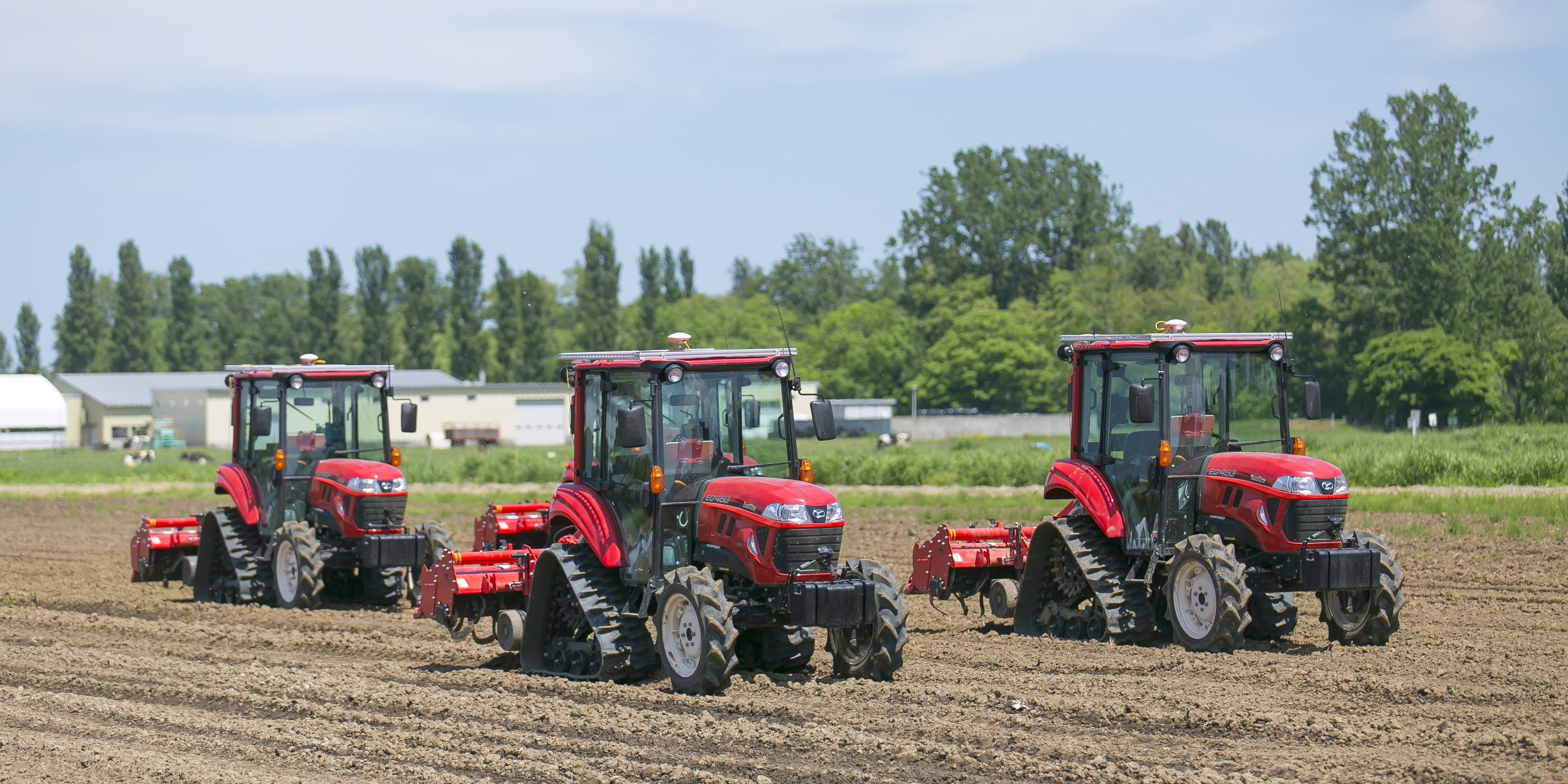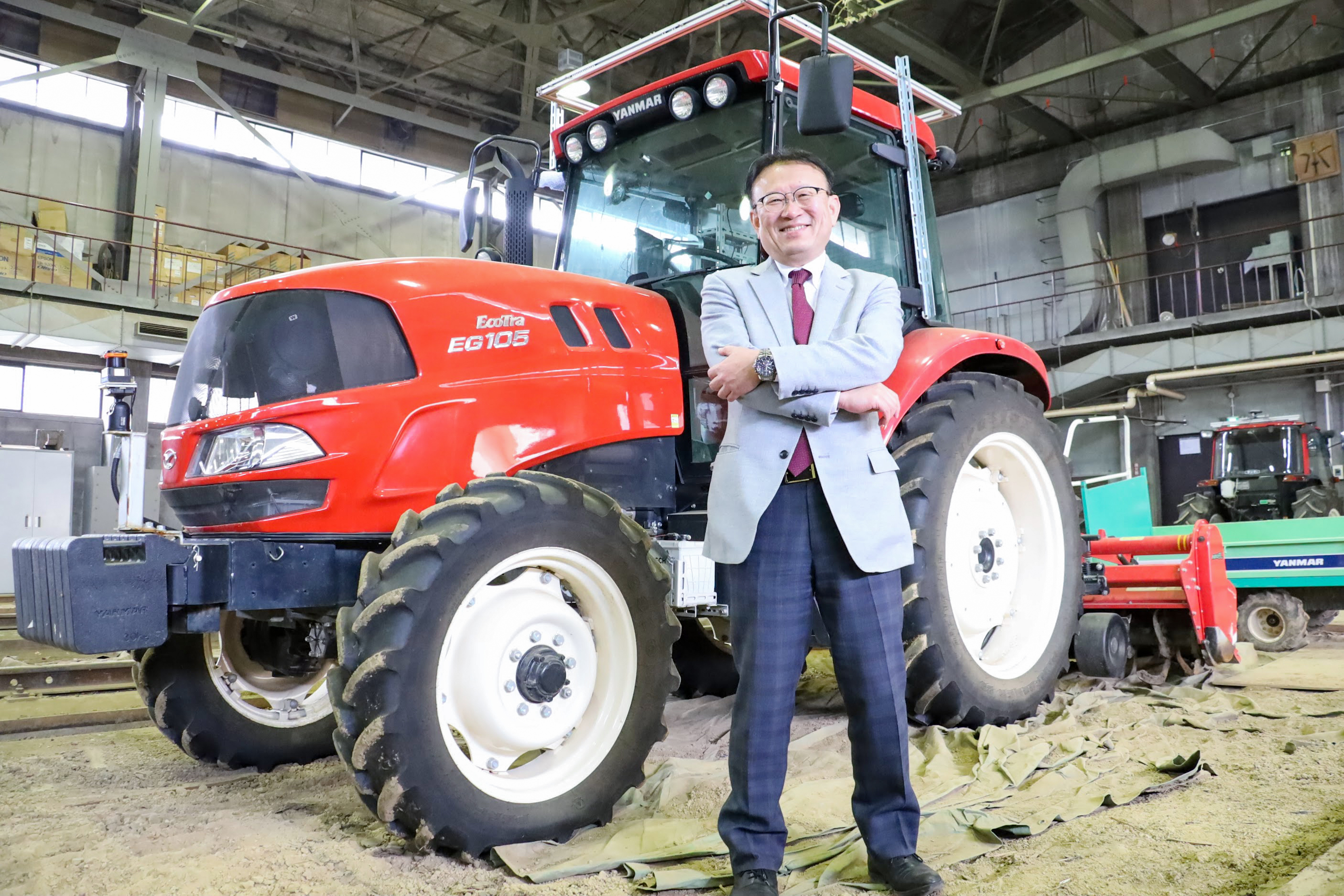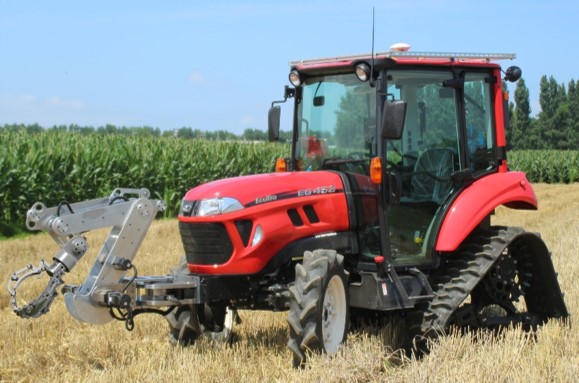Why robots are pioneers in the future of agriculture
Research Highlight | January 14, 2020
Agriculture in Japan is gravely suffering because of an aging population and a shortage of experienced leaders. On a global level, there are also concerns about food shortages as the population explodes on the planet. In response, scientists are seeking ways to solve these social problems by utilizing the technology of robotic farming. What does Professor Noboru Noguchi, one of the world’s leading experts of robotic agriculture, have to say about the future of agriculture?
“Our vehicle robotics lab is developing robots that perform unmanned agricultural work, for example, running tractors, rice planters, harvesters, boats that sprinkle chemicals in paddy fields and drones that observe farmlands from the sky,” said Professor Noguchi from the Research Faculty of Agriculture. From 2018, three major companies started selling the unmanned tractors. They enabled automatic driving with an error of 5 cm or less by utilizing high-accuracy GPS and the Quasi-Zenith Satellite or “MICHIBIKI,” which allows highly precise navigation.
“The underlying technology was developed in our laboratory. To implement our machinery to farmers, we publicized our research results without acquiring patents. Because of this, many manufacturers became interested in commercializing products based on our technology,” elaborated Professor Noguchi. The Japanese government is also enthusiastic about supporting “smart agriculture” utilizing robotics and information and communication technologies.
Multiple unmanned tractors working in cooperation as a unit
Professor Noguchi’s lab is now developing new technologies to allow unmanned tractors to work together, to select and harvest ripe pumpkins, or to evaluate the growth state of crops. In the future, Professor Noguchi plans to make a small agricultural robot that can navigate narrow hills and mountainous areas. “In the times to come, my dream is to develop a robot that works on rice terraces, an agricultural landscape unique to Japan. I would also like to make smarter agricultural robots that can make correct judgments through artificial intelligence based on various collected spatial information as if they were skilled farmers,” said Professor Noguchi. “I am very particular about developing technology for the people who can make use of it.”
In the implementation of smart agriculture, Professor Noguchi believes that its incorporation into social systems is as important as achieving technological development. His team is conducting tests on both Hokkaido University’s experimental farms and farmlands in Hokkaido Prefecture. They listen to the opinions of farmers and request feedback on their needs and problems. Further, it is necessary to collaborate with researchers, as well as businesses in the private sector which already have a management strategy in place, to disseminate technology that leads to industrialization and regional revitalization. They also discuss the deregulation of related laws with the relevant authorities.
“Hokkaido is known for its accessibility to agricultural sites, and it is blessed with an environment that is more than suitable for pursuing agricultural research. There are challenges right before our eyes, many farmers are cooperative in our research, and local governments are also interested. So, I advise young people to have great ambitions! Make the best use of the large fields and go heart and soul into this dynamic research,” commented Professor Noguchi.
Originally published in the Hokkaido University 2019 Guide Book in Japanese
Rearranged by Seyedehparmida Meraji (Science Writing Intern)
Photos and video provided by the Vehicle Robotics Laboratory




